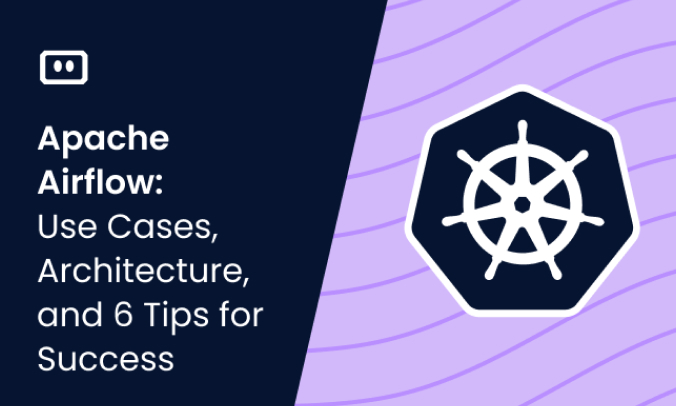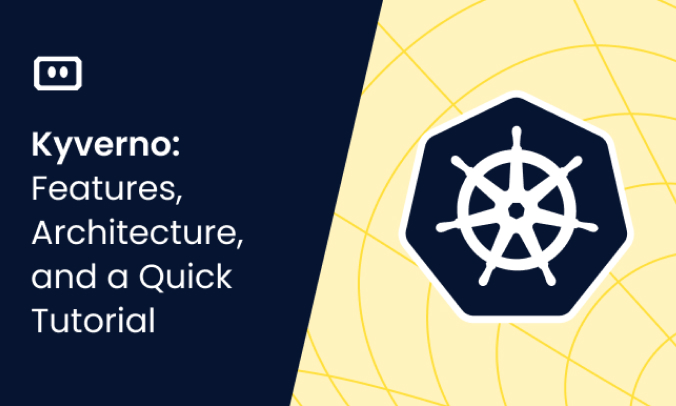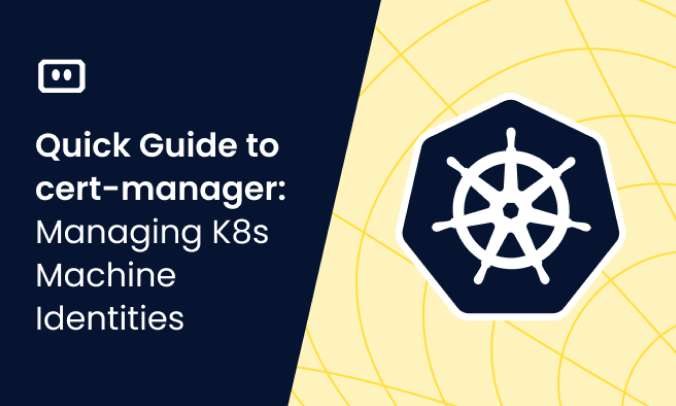What Is Kubernetes Management?
Kubernetes, also known as K8s, is an open-source platform designed to automate deploying, scaling, and managing containerized applications. It groups containers that make up an application into logical units, known as pods, and organizes them in clusters, for easy management and discovery.
Kubernetes management is the process of overseeing and controlling Kubernetes clusters. This includes the creation, updating, scaling, and deletion of pods and containers, along with monitoring their health and performance. It’s a crucial aspect of maintaining a smooth, efficient pipeline for software development and deployment.
Kubernetes management is not just about handling workloads. It also involves managing the underlying infrastructure, which includes networking, storage, and security. It’s a complex task, given the distributed and highly dynamic nature of Kubernetes environments.
What Are the Challenges of Managing Kubernetes?
Complexity
Managing Kubernetes is no small feat. Its complexity is one of the main challenges that IT professionals face. Kubernetes has a steep learning curve, with a multitude of components that need to be configured and managed. These include pods, services, volumes, and namespaces, each with their own specific functions and dependencies.
The intricate nature of Kubernetes also means that it’s easy to make mistakes. A single error in configuration could have cascading effects that lead to performance issues, or worse, system downtime. This emphasizes the need for thorough knowledge and careful management when working with Kubernetes.
Networking Issues
Another challenge in Kubernetes management is dealing with networking. Kubernetes uses a flat network model, meaning all Pods can communicate with each other. While this facilitates communication between Pods, it also introduces complexities in networking configuration, such as IP address management and load balancing.
Moreover, ensuring network security within a Kubernetes cluster can be tricky. You have to correctly set up network policies to control traffic flow between pods, while also safeguarding against potential threats from outside the cluster.
Storage Management
Storage management is another crucial aspect of Kubernetes management. Kubernetes supports a variety of storage systems, including local storage, network-attached storage (NAS), and cloud storage. Managing these diverse storage options requires a deep understanding of storage classes, persistent volumes, and persistent volume claims.
The dynamic nature of Kubernetes also presents unique challenges in storage management. Containers in Kubernetes are ephemeral, meaning they can be deleted and replaced at any time. This makes it necessary to have a robust strategy for data persistence, to ensure that data isn’t lost when a container goes down.
Security Concerns
Securing a Kubernetes cluster is a complex task, which involves securing both the cluster itself and the applications running on it. This includes implementing role-based access control (RBAC), managing secrets, and ensuring that containers are running in a secure environment.
Moreover, Kubernetes is constantly evolving, with new versions released frequently. This means that security strategies need to be continuously updated to keep up with the latest changes and vulnerabilities.
Monitoring and Logging
Monitoring and logging are essential for maintaining the health and performance of a Kubernetes cluster. However, given the dynamic and distributed nature of Kubernetes, this can be a challenging task.
Traditional monitoring and logging tools may not be suitable for Kubernetes, as they may not provide a complete picture of the cluster’s state. This has led to the development of specialized tools for Kubernetes monitoring and logging, which need to be properly configured and managed.
Technologies and Tools for Managing Kubernetes Clusters
Here are three main categories of tools that can help teams manage day to day operations for Kubernetes clusters:
Development Tools
For beginners, desktop development tools like Minikube and Docker Desktop can be a good starting point. These tools allow you to run a single-node Kubernetes cluster on your local machine, providing a safe environment to learn and experiment with Kubernetes.
For more experienced Kubernetes users, there are advanced tools and platforms available for more robust cluster management. Helm, Kustomize, and Terraform are some command-line tools that offer a wide array of functionalities to interact with and manage Kubernetes clusters.
Managed Kubernetes Solutions
For businesses that prefer not to manage Kubernetes in-house, managed Kubernetes solutions can be a viable option. These are services offered by cloud providers like Google Cloud, Amazon Web Services, and Microsoft Azure, which take care of the underlying infrastructure and management of Kubernetes clusters.
Managed Kubernetes solutions can help reduce the complexity of Kubernetes management, as they handle tasks like cluster setup, scaling, and upgrades. However, they also come with their own set of limitations and considerations, such as cost and vendor lock-in. In addition, organizations using managed Kubernetes solutions are still responsible for workloads running in Kubernetes, so a large part of the administrative burden remains.
Enterprise Kubernetes Management
For large organizations that need to manage multiple Kubernetes clusters across different environments, enterprise Kubernetes management platforms can be beneficial. These tools, such as Red Hat OpenShift and Rancher, provide a unified platform for Kubernetes management, with features for cluster deployment, scaling, monitoring, and more.
Enterprise Kubernetes management addresses all aspects of Kubernetes management, although they are complex to learn and implement, and typically require a sizable investment.
An alternative for effectively managing Kubernetes is lightweight tools that can help gain visibility over Kubernetes clusters, optimize costs, identify operational issues and troubleshoot them. One popular tool is our very own Komodor.
Related content: Read our guide to cluster autoscaler
Best Practices for Kubernetes Management
The following best practices will help you avoid common pitfalls when managing Kubernetes clusters.
Version Control Configuration Files
In Kubernetes management, version control configuration files is a key best practice. Configuration files act as the blueprint of your Kubernetes cluster, detailing how each service should be deployed and interconnected. By using version control systems like Git, you can track changes, roll back to previous versions if necessary, and ensure consistency across different environments.
Storing configuration files in a version control system also provides an audit trail of changes, making it easier to identify and resolve issues. Furthermore, it fosters collaboration among team members, allowing them to review, comment on, and approve changes before they are applied to the live environment.
Automate Deployments with CI/CD
Automation is an essential aspect of efficient Kubernetes management. By automating deployments with Continuous Integration/Continuous Deployment (CI/CD) pipelines, you can ensure that your applications are always up to date and in sync with the source code.
Automating deployments also reduces the risk of human error, which can lead to downtime or security vulnerabilities. Moreover, it enables fast and reliable delivery of features and bug fixes to your users.
CI/CD pipelines can be integrated with your version control system, allowing you to automatically build, test, and deploy your applications whenever changes are pushed to the repository. This can greatly enhance your team’s productivity and the quality of your applications.
Implement Role-Based Access Control (RBAC)
Security is paramount in Kubernetes management. One effective way to enhance security is by implementing Role-Based Access Control (RBAC). RBAC allows you to define what actions users and pods can perform on your Kubernetes resources.
By ensuring that users and pods have only the permissions necessary to perform their tasks, RBAC helps prevent unauthorized access to sensitive data or critical operations. It can also help limit the potential impact of compromised user accounts or exploited pod vulnerabilities.
Implementing RBAC requires careful planning and management. You need to identify the roles in your organization, define their responsibilities, and assign the appropriate permissions to each role. It’s also crucial to regularly review and update these roles and permissions as your organization and applications evolve.
Implement Kubernetes Autoscaling
One of the key advantages of Kubernetes is its ability to automatically scale applications based on demand. By implementing Horizontal Pod Autoscaling (HPA) and Vertical Pod Autoscaling (VPA), you can ensure that your applications always have the necessary resources to meet user demand, without over provisioning and wasting resources.
HPA can scale your applications based on CPU usage, memory consumption, or custom metrics. VPA can ensure pods run on a node with sufficient resources for their operations.
Implementing HPA and VPA requires careful monitoring and tuning. You need to set appropriate thresholds for scaling up and down, monitor the performance of your applications, and adjust these thresholds as necessary.
Stateful Application Management
Managing stateful applications in Kubernetes can be challenging, but it’s essential for many enterprise applications. Stateful applications require a persistent storage layer that survives pod restarts and rescheduling.
Kubernetes provides StatefulSets and Persistent Volumes to manage stateful applications. StatefulSets ensure that each pod in a set has a unique, stable identity and can maintain its state across restarts. Persistent Volumes provide a way to provision and manage storage resources independently of pods.
To manage stateful applications effectively, you need to carefully design your storage architecture, choose the right types of storage for your workloads, and monitor and tune the performance of your storage resources.
Learn more in our detailed guide to Kubernetes PVC
Implement Ingress and Egress Controls
Ingress and egress controls are crucial for securing and managing network traffic to and from your Kubernetes applications. Ingress controls manage incoming traffic, allowing you to define how external clients can access your applications. Egress controls manage outgoing traffic, allowing you to control how your applications interact with external services.
Implementing proper ingress and egress controls can enhance the security, performance, and reliability of your Kubernetes applications. It can help protect your applications from threats, optimize the routing of network traffic, and ensure high availability and fault tolerance.
Simplifying Kubernetes Management with Komodor
Komodor is a dev-first Kubernetes operations and reliability management platform. It excels in providing a simplified and unified UI through which you can manage the daily tasks associated with Kubernetes clusters. At its core, the platform gives you a real-time, high-level view of your cluster’s health, configurations, and resource utilization. This abstraction is particularly useful for routine tasks like rolling out updates, scaling applications, and managing resources. You can easily identify bottlenecks, underutilized nodes, or configuration drift, and then make informed decisions without needing to sift through YAML files or execute a dozen kubectl commands.
Beyond just observation, Komodor integrates with your existing CI/CD pipelines and configuration management tools to make routine tasks more seamless. The platform offers a streamlined way to enact changes, such as scaling deployments or updating configurations, directly through its interface. It can even auto-detect and integrate with CD tools like Argo or Flux to support a GitOps approach! Komodor’s “app-centric” approach to Kubernetes management is a game-changer for daily operational tasks, making it easier for both seasoned DevOps engineers and those new to Kubernetes to keep their clusters running smoothly, and their applications maintaining high-availability.
If you are interested in checking out Komodor, use this link to sign up for a Free Trial.


